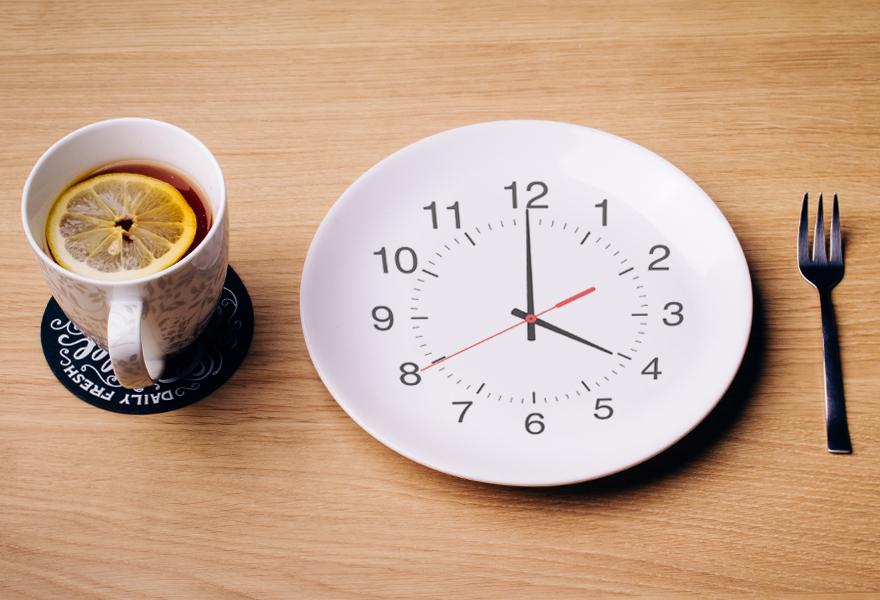
Our human ancestors before they discovered farming were known to be hunter gatherers. This means they often walked many miles before finding any food to eat. Then they did it again the next day. They were basically starving themselves until they hopefully found the next source of food – either a big antelope or deer they killed or some berries. Without consciously being aware of it – our ancestors were intermittent fasting.
In modern society with Ubereats and Seamless we’ve been accustomed now to having our food available 24-7. As I’m writing this article right now at 3am – if I want a burrito delivered to me, all it will take is a few clicks of my mouse. I don’t even have to get up to grab my credit card. I’ve actually left the front door unlocked so I don’t even have to get up to let the delivery guy in. Life is good.
Is it though? Modern humans suffer from epidemic rates of diabetes, high blood pressure, and cardiovascular disease. Scientists and anthropologists studying our human ancestors note the absence of a lot of these medical conditions we suffer from today. It is thought that having food available to usand eating constantly 24-7 may be more harmful to us than good.
What is Intermittent Fasting?
Intermittent fasting is less of a diet and more of a pattern of eating. It doesn’t change what you eat – but when you eat it. Because it’s not a diet and you can eat whatever you want, just in a given time frame, it’s actually easier to implement into your lifestyle than a regular diet and there may be tons of health benefits. The biggest health benefits that most Intermittent Fasters get is weight loss and lean muscle building. Jimmy Kimmel, Hugh Jackman, and Chris Hemsworth are all noted to be Intermittent Fasters.
How does it work?
Your body can either be in the fed state or the fasting state. The fed state begins when you start eating and lasts for three to five hours as your body continues to digest and absorb nutrients from the food that you just ate. During this period, the “fed” state, your insulin levels are high and it is very hard to lose fat. After these three to five hours post meal, you body enters a “post-absorptive” state which lasts an additional 8-12 hours. It is not until after this time period ends, that your body is able to enter the fasting state – where insulin levels are low and your body is finally able to burn fat, and thus lose weight. Put simply, 5+12 or almost 17 hours after you eat your last meal, your body is finally able to enter the fasting state and start burning fat.
Intermittent Fasting takes advantage of this. There are various methods of doing it but the most common method and in my opinion easiest one to implement on a regular basis is eating for only an 8 hour time frame during your day. For example, you can choose to eat food from 1pm to 9pm or from 3pm to 11pm – you pick your 8 hour window and make sure it’s consistent every day. The other 16 hours you will not be eating in order to help your body enter the fasting state to burn fat. The good news is, with this eating pattern, you can eat whatever you want in the 8 hour window.
How can you eat whatever you want and STILL lose weight?
Let’s think about it this way. We normally eat three meals – breakfast, lunch and dinner. With intermittent fasting, if you’re choosing to only eat from 1pm to 8pm, you’ll be skipping breakfast and only eat lunch and dinner. If you were getting 1,000 calories at each meal (3,000 total in a day) and now you’re skipping breakfast you’ll automatically start getting only 2,000 total calories in a day (lunch+dinner) and you will lose weight simply by reducing caloric intake! Even if you increase your lunch and dinner calories to 1,500 calories each (to maintain your 3,000 calorie a day diet), you will lose weight because by intermittent fasting you’ll give your body enough time to enter the fasting state.
There are other ways to do intermittent fasting that others have had success with. These include alternate day fasting – fast for 24 hours every other day and 5:2 intermittent fasting where you eat normally 5 days a week and restrict your calories to only 25% for 2 days a week. At MDLingo we believe that the easiest way to build it in to your schedule is to do the same thing every day and we recommend the 16 hour fast + 8 hour feast plan. Let us know in the comments below about your experience with intermittent fasting!
*The views and opinions expressed herein are those of the author and do not necessarily reflect the views of MDLingo.com, its affiliates, or its employees.